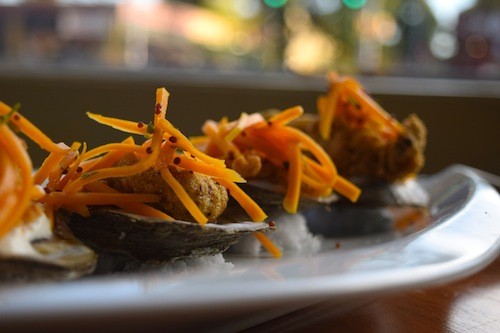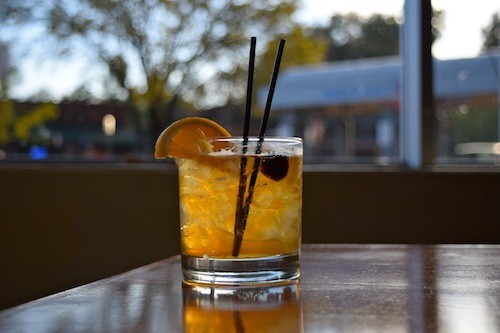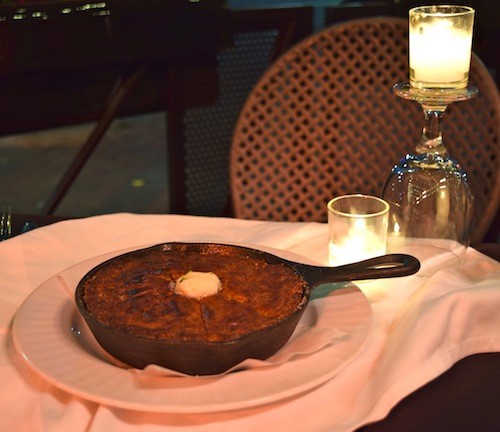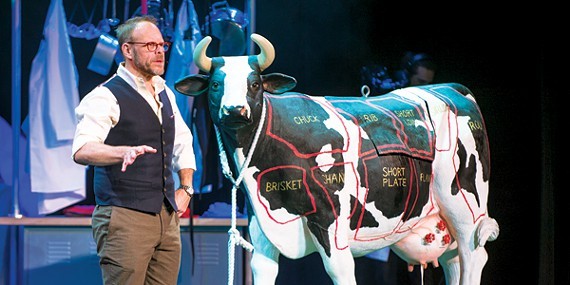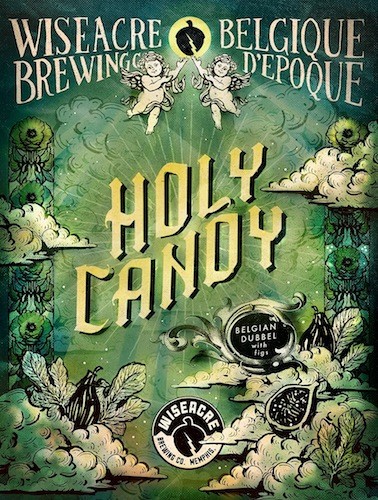There isn’t any furniture at Love Pop Soda Shop. That’s right: no tables, no chairs, no display cases. Instead, they’ve got 700 white plastic milk crates. Milk crates to sit on, milk crates to rest your glass on. The bar is actually a long row of — you guessed it — stacked milk crates, topped by a smooth wood panel. You really have to see it to believe it.
You might think that such an arrangement would be the product of necessity, a last-minute fix for a shop that didn’t have the time or money to buy proper furniture. Far from it. The design, by Memphis-based brg3s architects, is actually pretty nifty.
Think about it. Turn a milk crate on its side, stick an LED light behind it, and what do you get? A stylish, semitranslucent display case. Like Legos, Milk crates are cheap and infinitely rearrangeable.
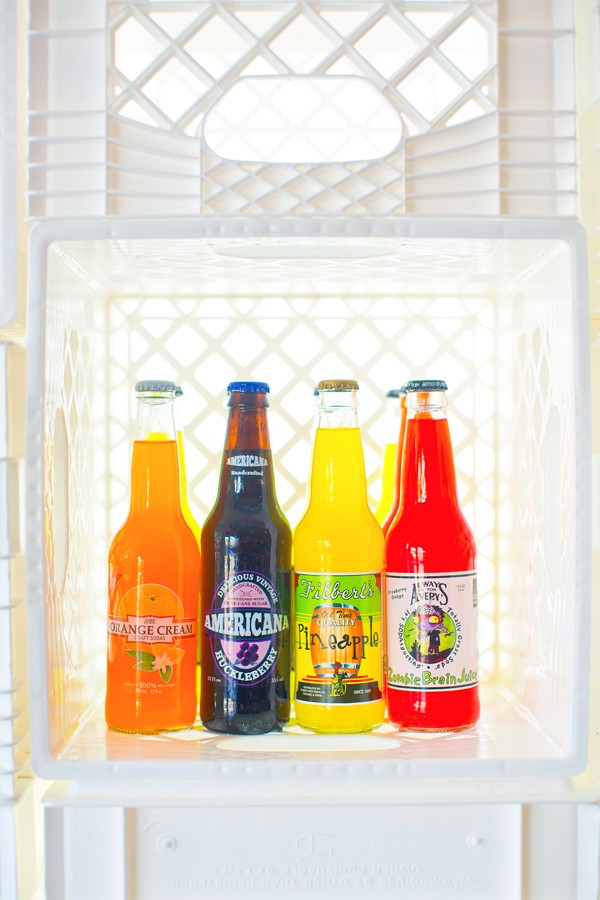 Justin Fox Burks
Justin Fox Burks
More important, the design reflects the simplicity of Love Pop’s concept: Do one thing. Do it well. As you may have guessed, Love Pop serves soda — more than 200 varieties and counting — but you won’t find any Mountain Dew around here. Instead, they focus on small-batch bubbles, the kind of pop that is produced like craft beer.
A good example is Simpson Springs Sarsaparilla ($3) — a close cousin to root beer. Whereas the ingredient labels on most corporate sodas read like a chemistry textbook, this 100-year-old recipe, produced at a mom-and-pop shop in South Easton, Massachusetts, includes just four ingredients — and one of them is carbonated spring water.
And the taste? It’s like A&W Root Beer without the jet fuel (high-fructose corn syrup, phosphoric acid, sodium benzoate, etc.). I am no shill for soda, but Simpson Springs surprised me. It’s rich and smooth with undertones of vanilla and sassafras.
Co-owner Mignonne Wright says she dreamed up Love Pop back in 2005, when she and her son, Brendan, were on a road trip through the American West. While driving down Route 66, they happened on a place called Pop Soda Ranch, and Brendan says he thought he had died and gone to heaven.
“Back then I was an 8th-grader,” Brendan explains, “So the idea of over 600 different kinds of soda — that sounded like the best thing in the world to me.”
Wright says she wants Love Pop to be an all-ages hangout, the kind of soda bar that will be refreshingly new to millennials and comfortingly familiar to baby boomers, nostalgic for the lunch counters of the 1950s and 60s. At the grand opening on Saturday, they will give out free ice cream to make floats. How many kinds of ice cream, you ask?
“Just one,” says co-owner Taylor Berger. “Vanilla. We figure you’ve got enough choices with 200 kinds of soda, so you shouldn’t have to stress about ice cream.”
Love Pop Soda Shop, 506 S. Main
Over at Bleu — the restaurant in the Westin — they’ve updated their lounge with new paint and furniture. And there’s a brand-new tap system for beer. But the real news at Bleu isn’t the lounge. It’s the revamped menu by chef Ana Gonzalez.
A ball of energy with a tight ponytail, Gonzalez comes to Memphis by way of Colombia. After attending culinary school at Johnson and Wales, she went on to work at Disney’s Contemporary Resort and the Peabody’s Capriccio Grill. In the three months since she came on at Bleu, she has given the restaurant a bold new flavor, emphasizing small plates that feature fresh, local ingredients.
Take the Bacon-Wrapped Shrimp with Polenta Cake ($8). A pair of tiny towers draped with micro-greens from Memphis’ Green Girl Produce, it’s Gonzalez’s mischievous take on shrimp and grits. (Grits and polenta are essentially the same thing; the only difference is the type of corn used and the fineness of the grind.)
Drizzled with deliciously vinegary barbecue sauce, Gonzalez’s shrimp strikes the right balance. At the top, there is the fresh taste of micro-greens like radish and daikon sprouts. In the middle, the plump richness of shrimp and bacon. And at bottom, the crisp crunch of fried polenta. The best part? It’s inexpensive, so you can order a second round.
 John Klyce Minervini
John Klyce Minervini  John Klyce Minervini
John Klyce Minervini 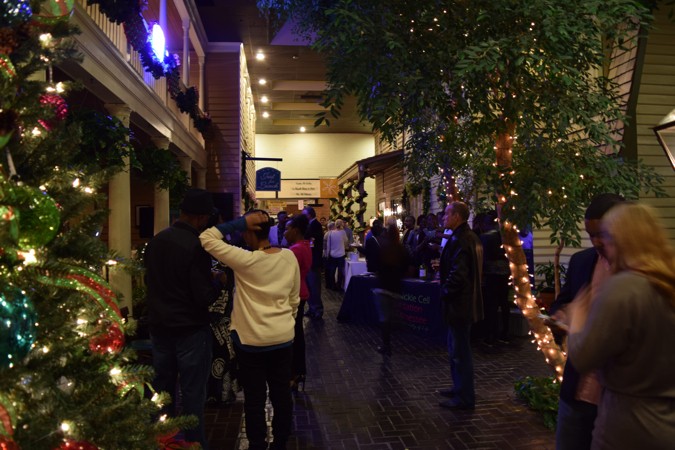 John Klyce Minervini
John Klyce Minervini 

